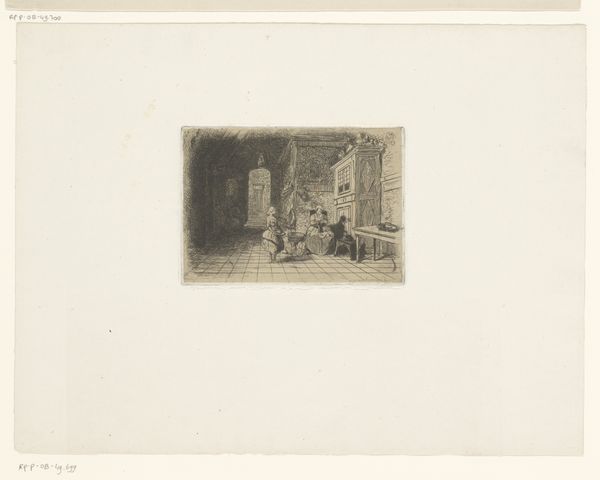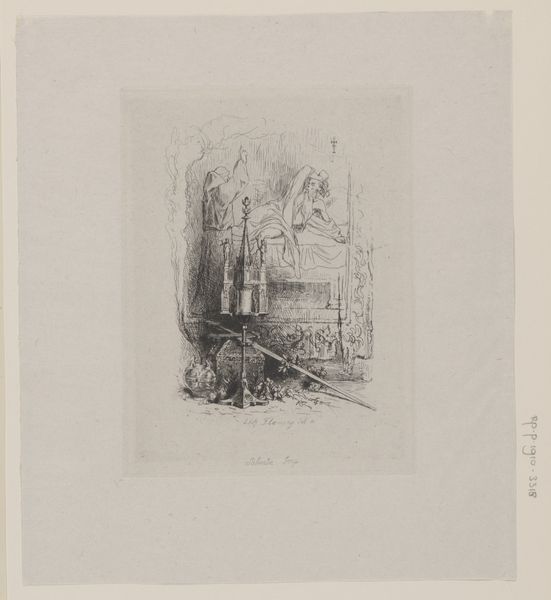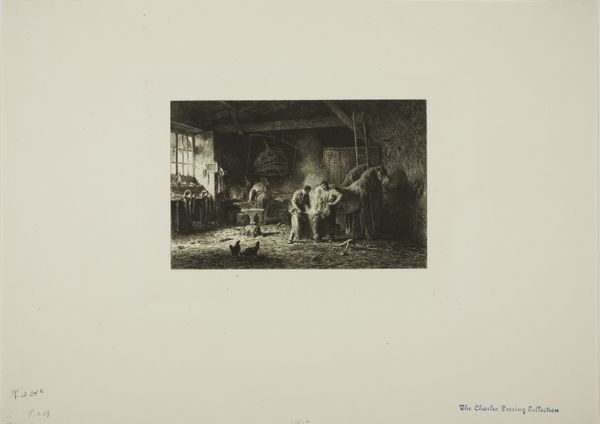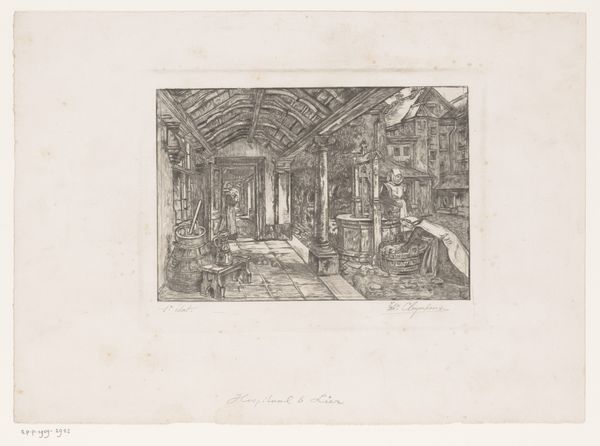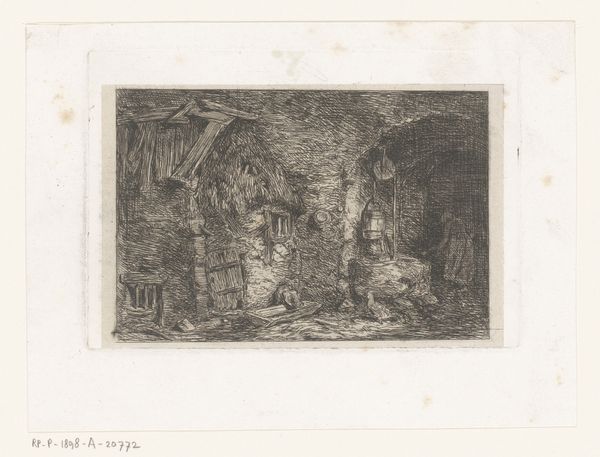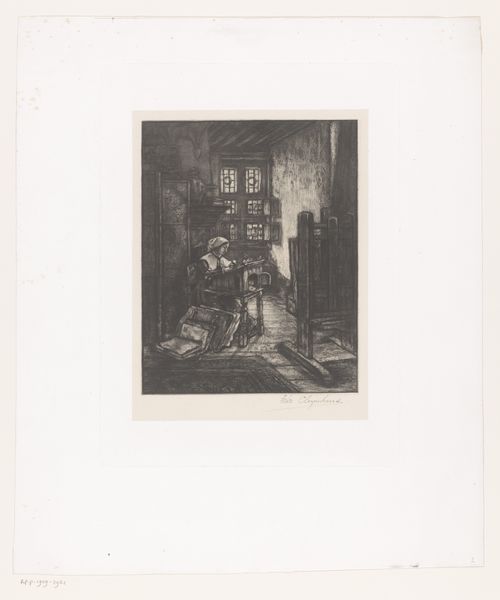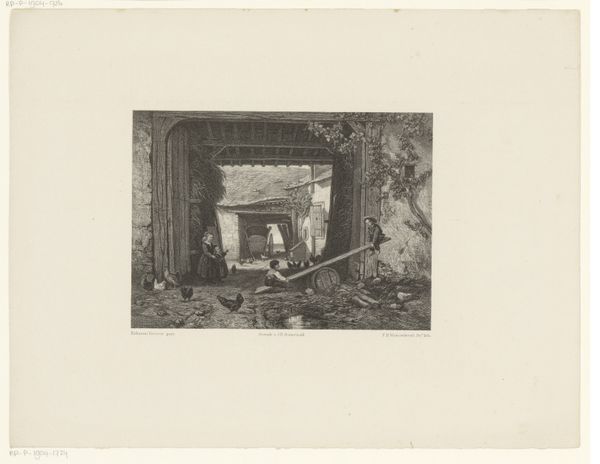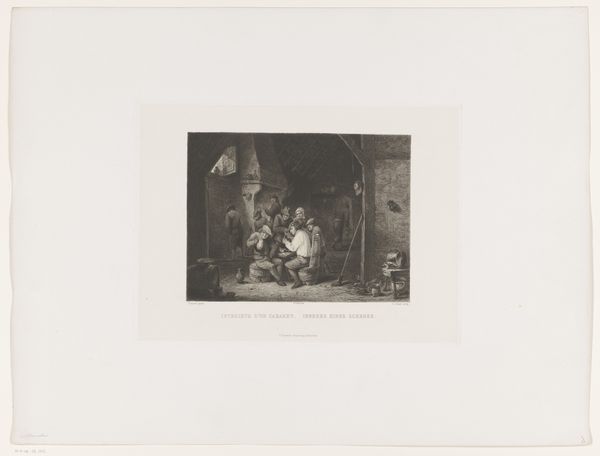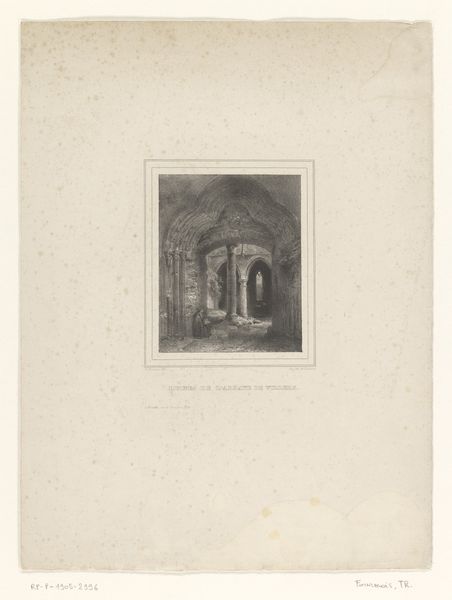
drawing, print, etching
drawing
etching
landscape
intimism
genre-painting
realism
Dimensions: height 116 mm, width 112 mm
Copyright: Rijks Museum: Open Domain
Editor: This etching by Willem Linnig II, made sometime between 1852 and 1890, is called "Vrouw knielend op zolder" – "Woman Kneeling in the Attic." It’s small, monochromatic, and immediately makes me think of hushed secrets in a dimly lit space. What do you see in this piece, particularly within its historical context? Curator: It's interesting you describe it as hushed. Considering its time, the image resonates with the rise of Realism and Intimism in art. We are moving away from grand narratives toward everyday scenes. The attic, often a private, marginal space, becomes a stage for quiet domesticity. What social codes might be shaping this kneeling woman’s activities in such a tucked-away space? Editor: Perhaps it’s a commentary on women’s roles during that period? Being confined to domestic spaces and private duties? Curator: Precisely! The etching could subtly critique the societal expectations placed upon women. The 'genre-painting' theme intersects with societal pressures, revealing how women’s lives were often relegated to the domestic sphere, hidden from public view. This seemingly simple depiction has layers of socio-political commentary embedded within it. Do you see that shift reflected in the broader art world at the time? Editor: Yes, absolutely! Think of Courbet's focus on working-class life or the Impressionists capturing fleeting moments of everyday experience. It's all about bringing art closer to the lives of ordinary people. I'm thinking differently about "Vrouw knielend op zolder" now. Curator: Indeed. The power of art lies in its ability to reflect, question, and ultimately, shape our understanding of society. Looking at the museum’s role, showcasing this etching invites us to reassess these historical contexts, sparking conversations on gender roles, privacy, and the ongoing evolution of art as a socio-political mirror. Editor: That’s a fantastic way to frame it. It’s so cool to consider how such a simple image could carry such weighty historical and social implications.
Comments
No comments
Be the first to comment and join the conversation on the ultimate creative platform.
